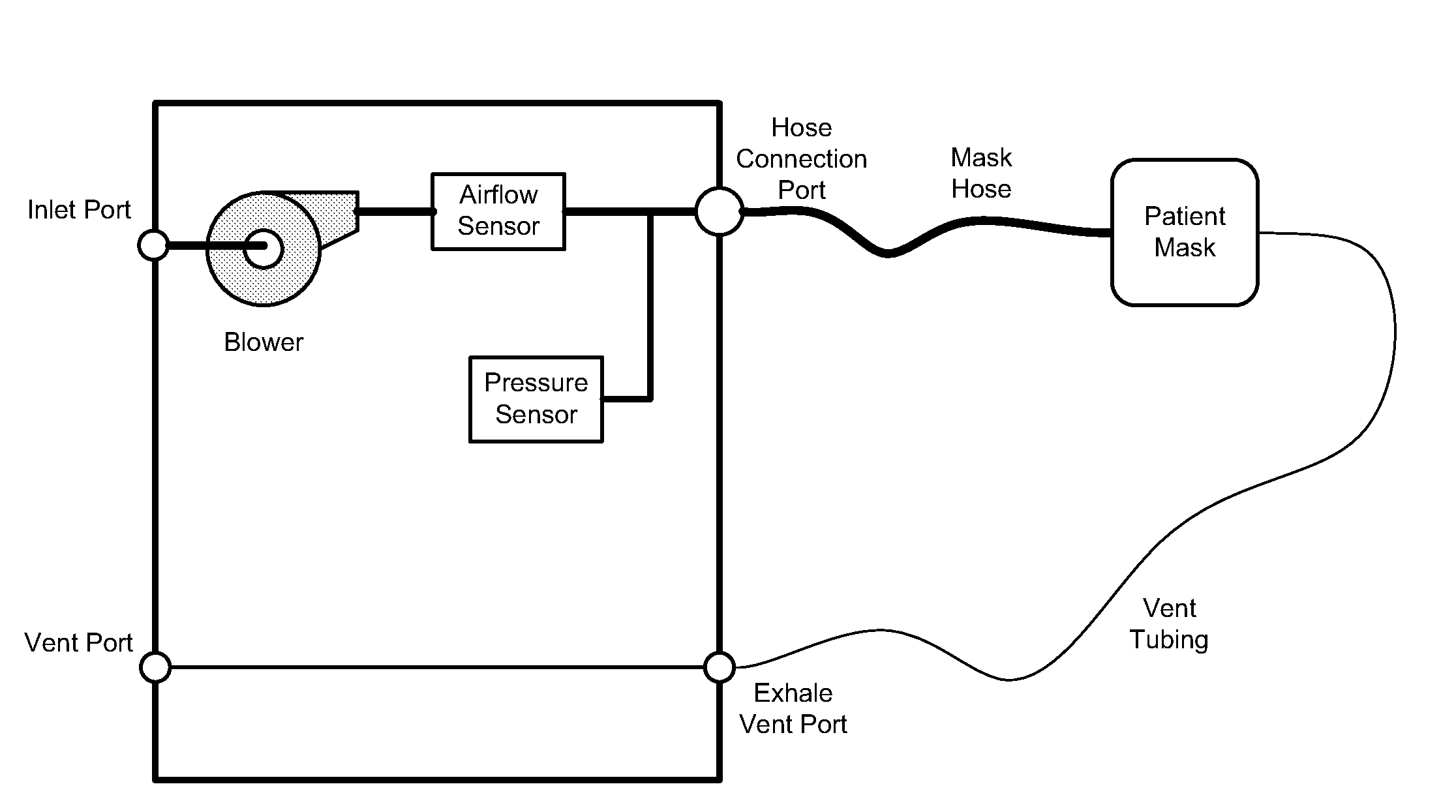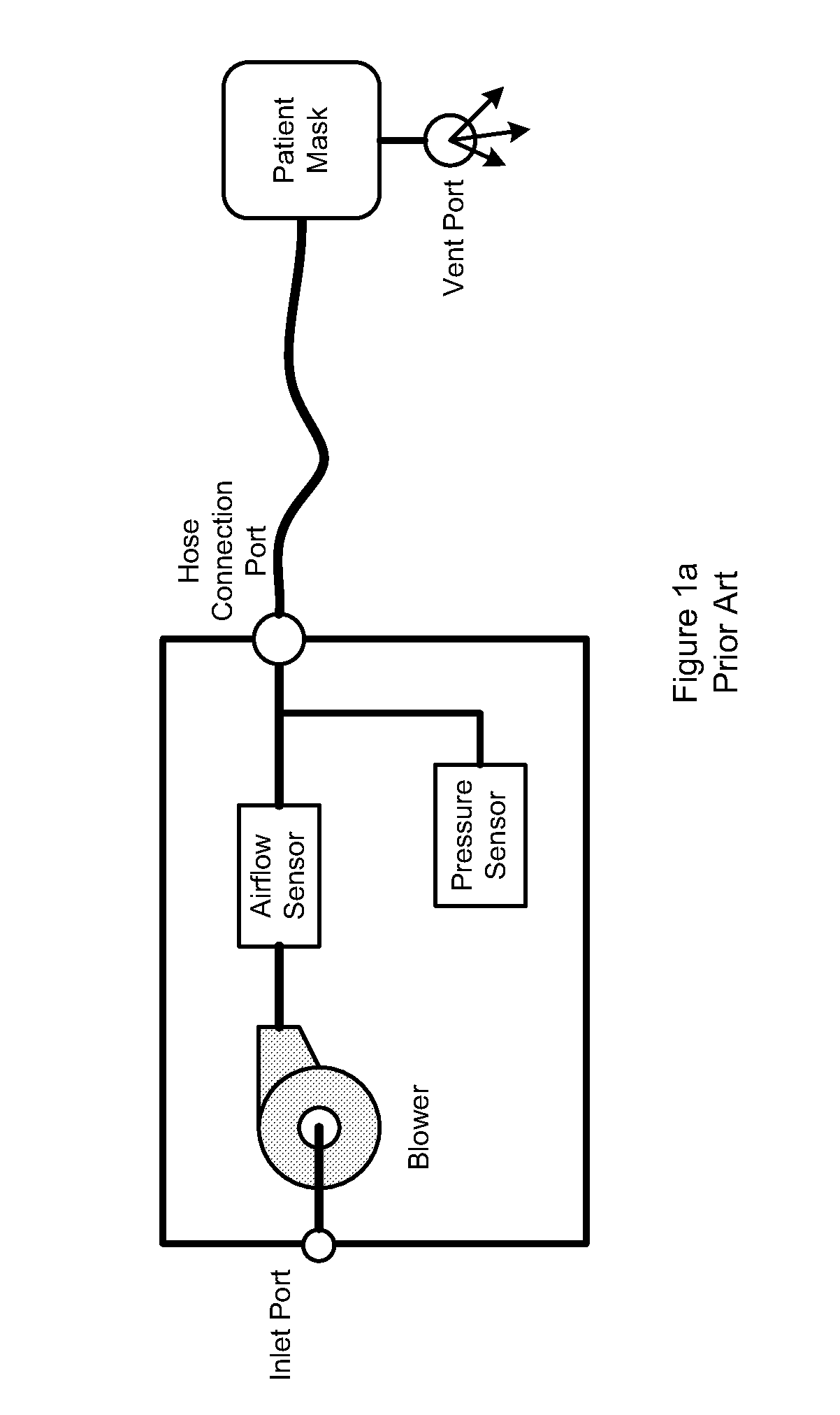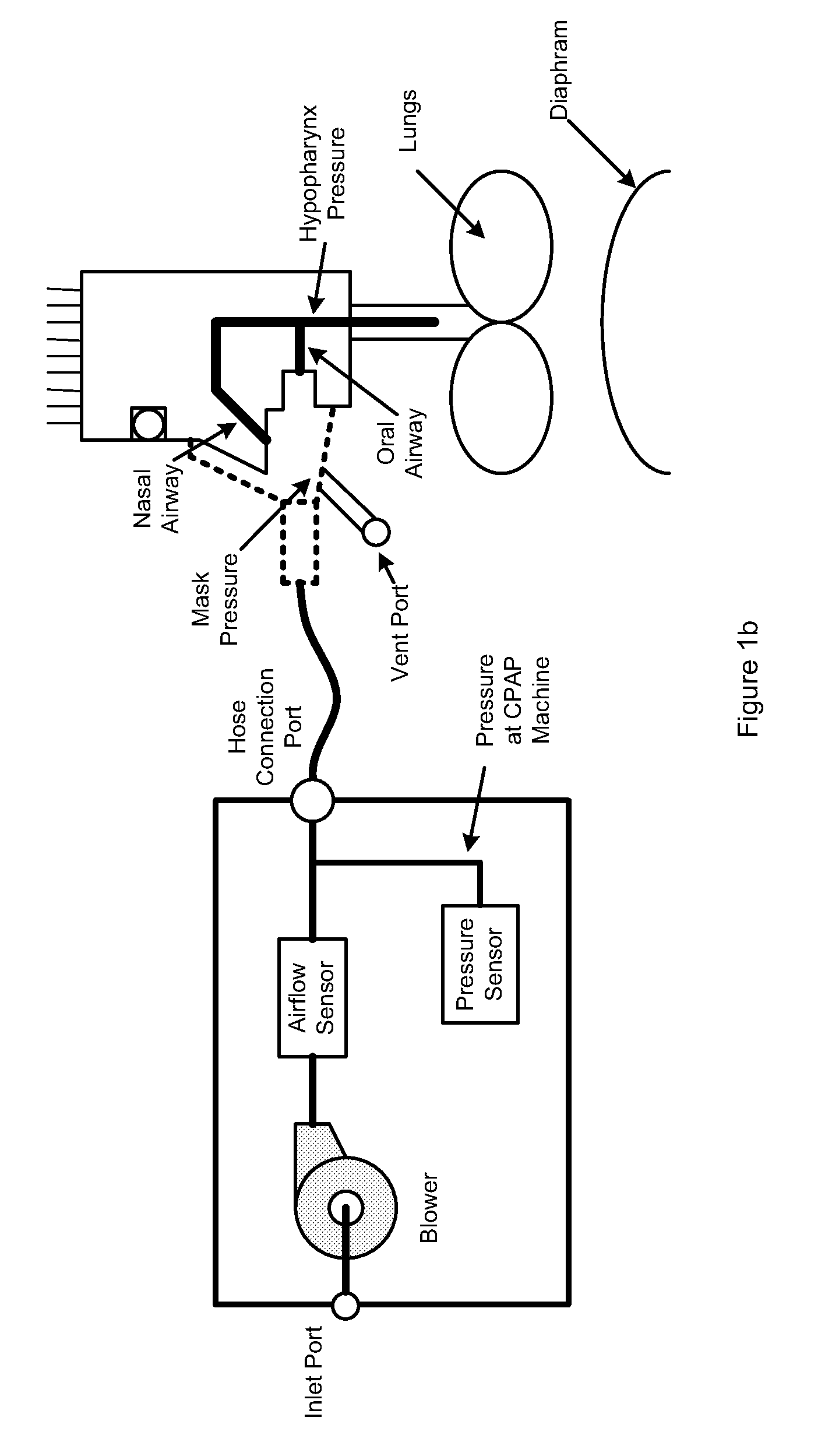Positive Airway Pressure System and Method
a pressure system and airway technology, applied in the field of positive airway pressure devices and methods, can solve the problems of hypopnea or apnea event, pharynx collapse, and related art cpap masks that do not maintain a constant leakage rate for different pressures, and achieve the effect of improving patient therapy
- Summary
- Abstract
- Description
- Claims
- Application Information
AI Technical Summary
Benefits of technology
Problems solved by technology
Method used
Image
Examples
Embodiment Construction
[0036]A common prior art device is disclosed in FIG. 1a. Airflow is generated by the blower. Air enters the inlet port and is fed to the blower. Generated airflow is delivered from the blower, through the airflow sensor, and exits the device at the hose connection port, through the patient hose, to the patient mask, and to the patient. A vent port is provided at the mask to expel CO2. The mask typically fits over the patient's nose but may enclose the patient's nose and mouth. Airflow and / or pressures are measured and controlled within the device shown.
[0037]Refer to FIG. 1b. Pressure and fluctuations in pressure at any location in the CPAP circuit is determined by the distance from the device and the vent port. In prior art, the vent port is placed in the mask. Rapoport's APSS 2007 Abstract # 0080 abstract shows that therapeutic pressure at the hypopharynx can be drastically different than the mask pressure.
[0038]Referring to FIG. 2a, at least one preferred embodiment of the propos...
PUM
 Login to View More
Login to View More Abstract
Description
Claims
Application Information
 Login to View More
Login to View More - R&D
- Intellectual Property
- Life Sciences
- Materials
- Tech Scout
- Unparalleled Data Quality
- Higher Quality Content
- 60% Fewer Hallucinations
Browse by: Latest US Patents, China's latest patents, Technical Efficacy Thesaurus, Application Domain, Technology Topic, Popular Technical Reports.
© 2025 PatSnap. All rights reserved.Legal|Privacy policy|Modern Slavery Act Transparency Statement|Sitemap|About US| Contact US: help@patsnap.com



